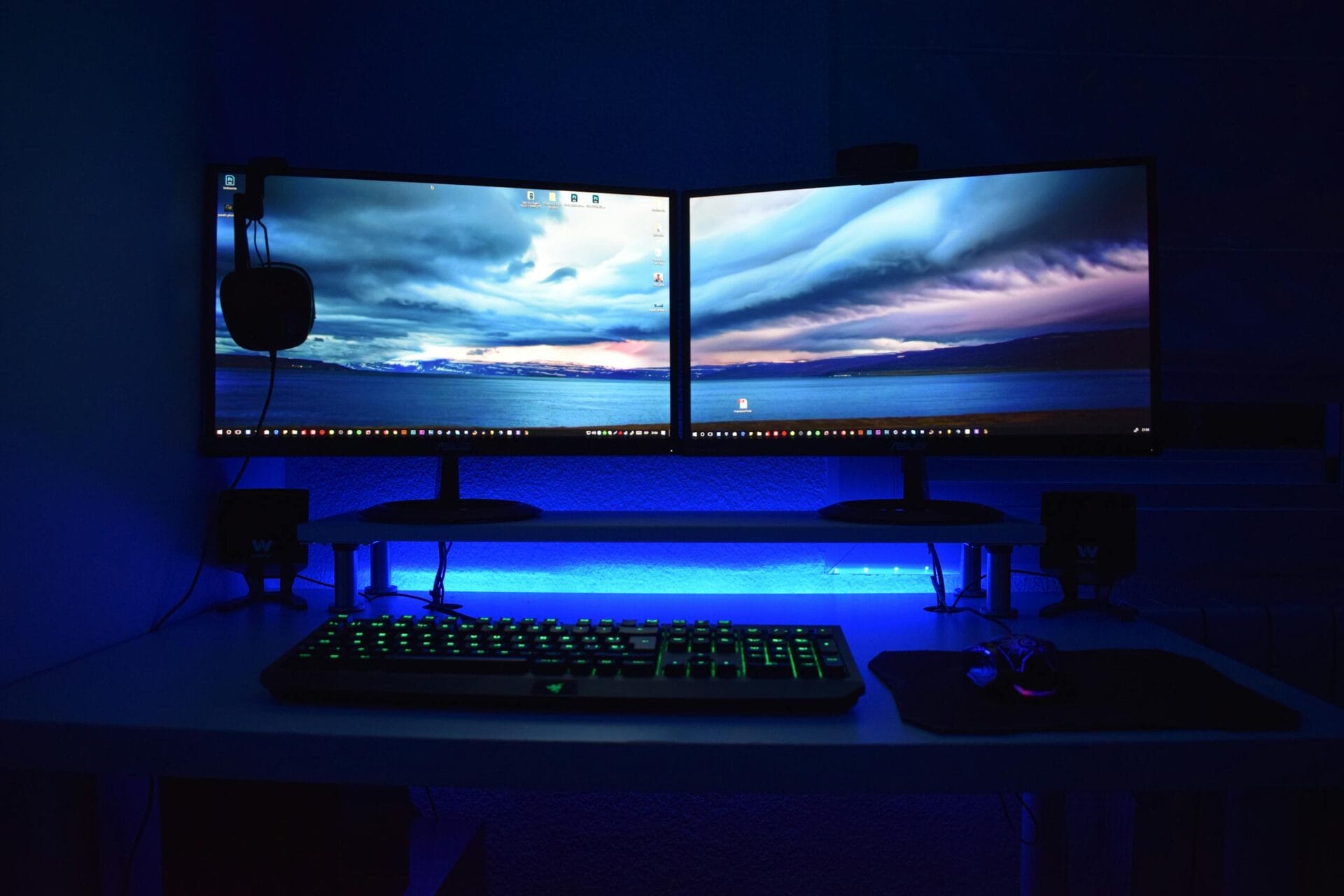Best Ultrawide Monitor for Music Production 2024 – Expand Your Visual Soundscape
When it comes to music production, the right equipment can make all the difference. While most producers focus on their audio gear, the monitor they use can significantly impact their workflow and the quality of their work. Best Ultrawide Monitor for Music Production have gained popularity in recent years for their ability to provide a vast visual workspace, which can be invaluable for music production.
Ultrawide monitors offer a unique aspect ratio, typically around 21:9, providing considerably more horizontal screen real estate than traditional monitors. This extra space allows music producers to have more tracks, plugins, and editing windows visible at the same time, streamlining their workflow and enhancing their overall productivity. Additionally, the immersive nature of best ultrawide monitors can create a more engaging and inspiring workspace, which is crucial for creative endeavors like music production.
As the demand for high-quality audio production continues to grow, producers are constantly seeking ways to improve their efficiency and creative capabilities. Ultrawide monitors have emerged as a valuable tool in achieving these goals, and their benefits for music production are becoming increasingly apparent.
In A Hurry
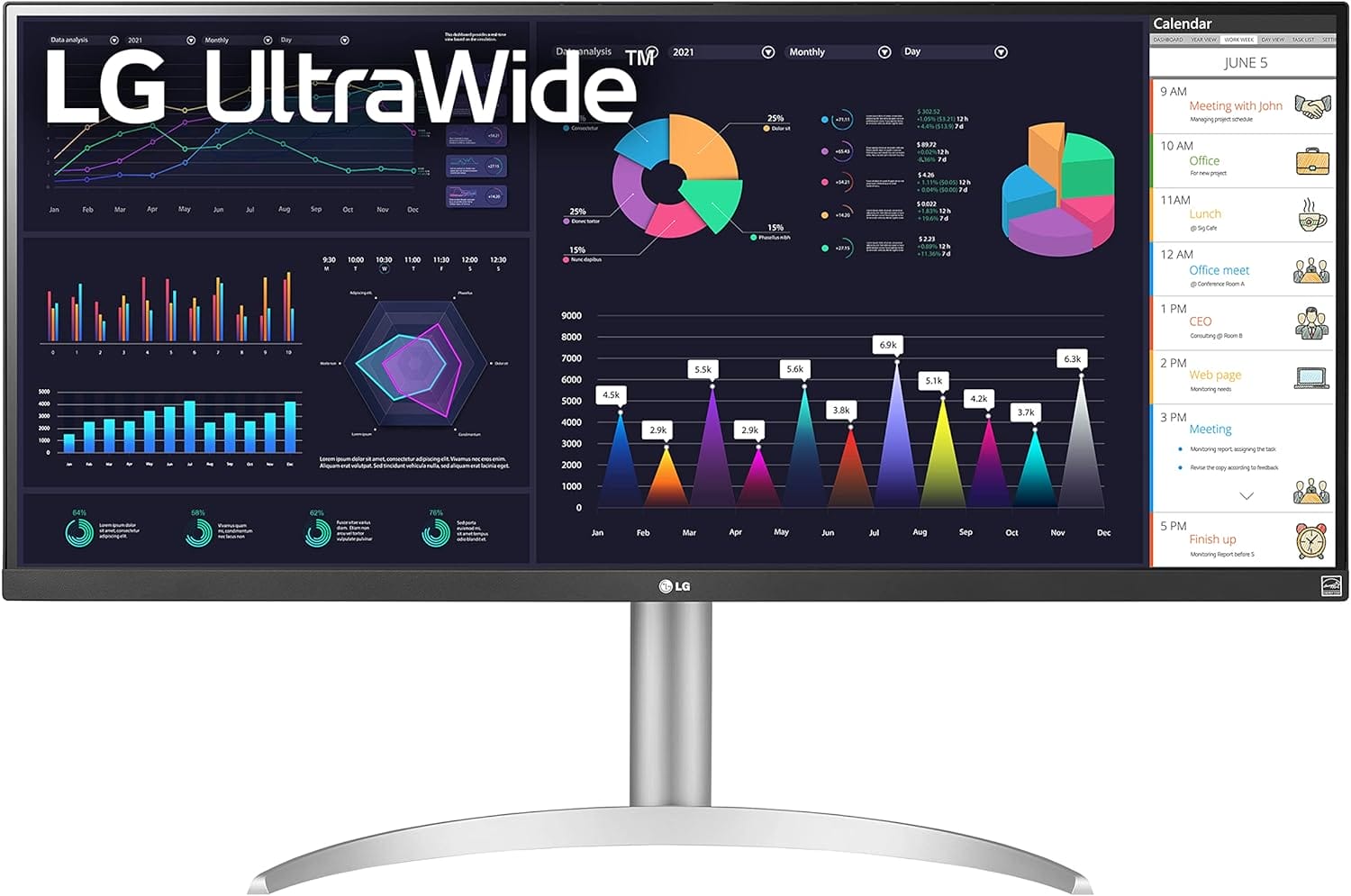
LG 34WQ650-W Monitor
34 Inch 21:9 UltraWide Full HD (2560 x 1080) 100Hz IPS Monitor, 100Hz Refresh Rate with RGB 99% Color Gamut, VESA DisplayHDR 400, USB Type-C, AMD FreeSync, Tilt/Height Adjustable Stand
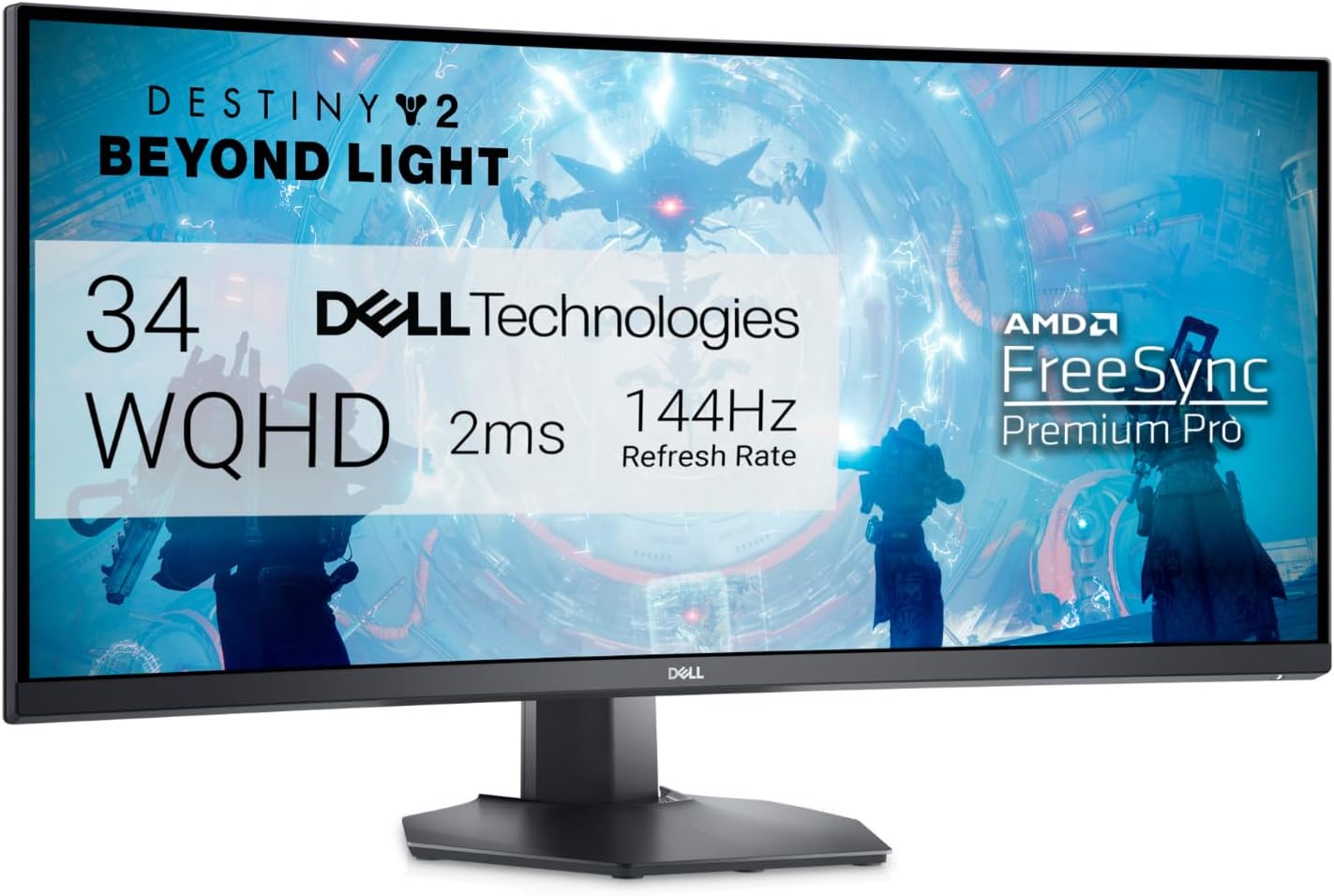
Dell S3422DWG Curved Gaming Monitor
34 Inch 1800R Curved Screen with 144Hz Refresh Rate, WQHD (3440 x 1440) Display, HDMI, DP to DP 1.4 Cable, AMD FreeSync – Black
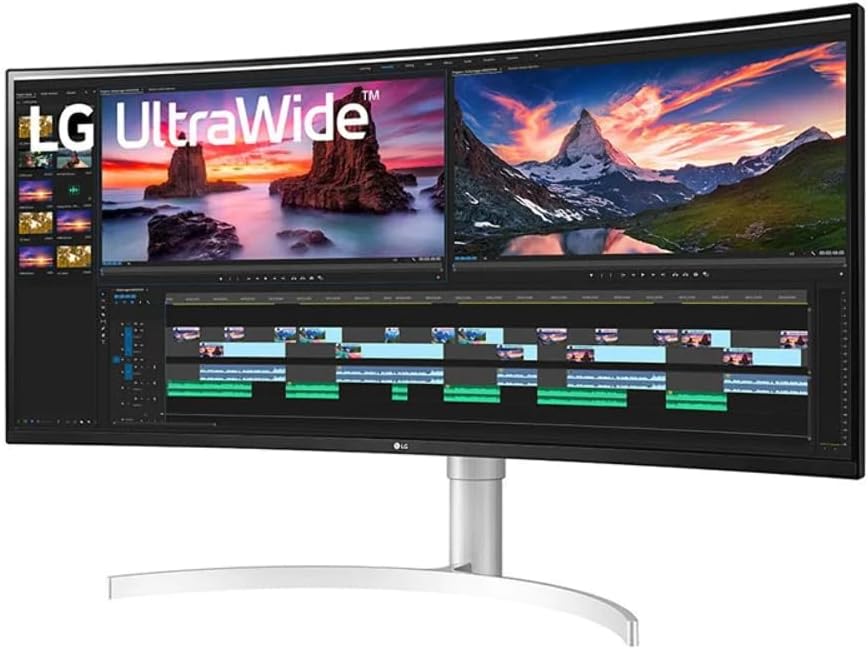
LG 38WN95C-W Monitor
38″ 21:9 Curved UltraWide QHD+ (3840 x 1600) Nanio IPS Display, Thunderbolt 3, 1ms Response Time, 144Hz Refresh Rate, NVIDIA G-SYNC, AMD FreeSync -White/Silver
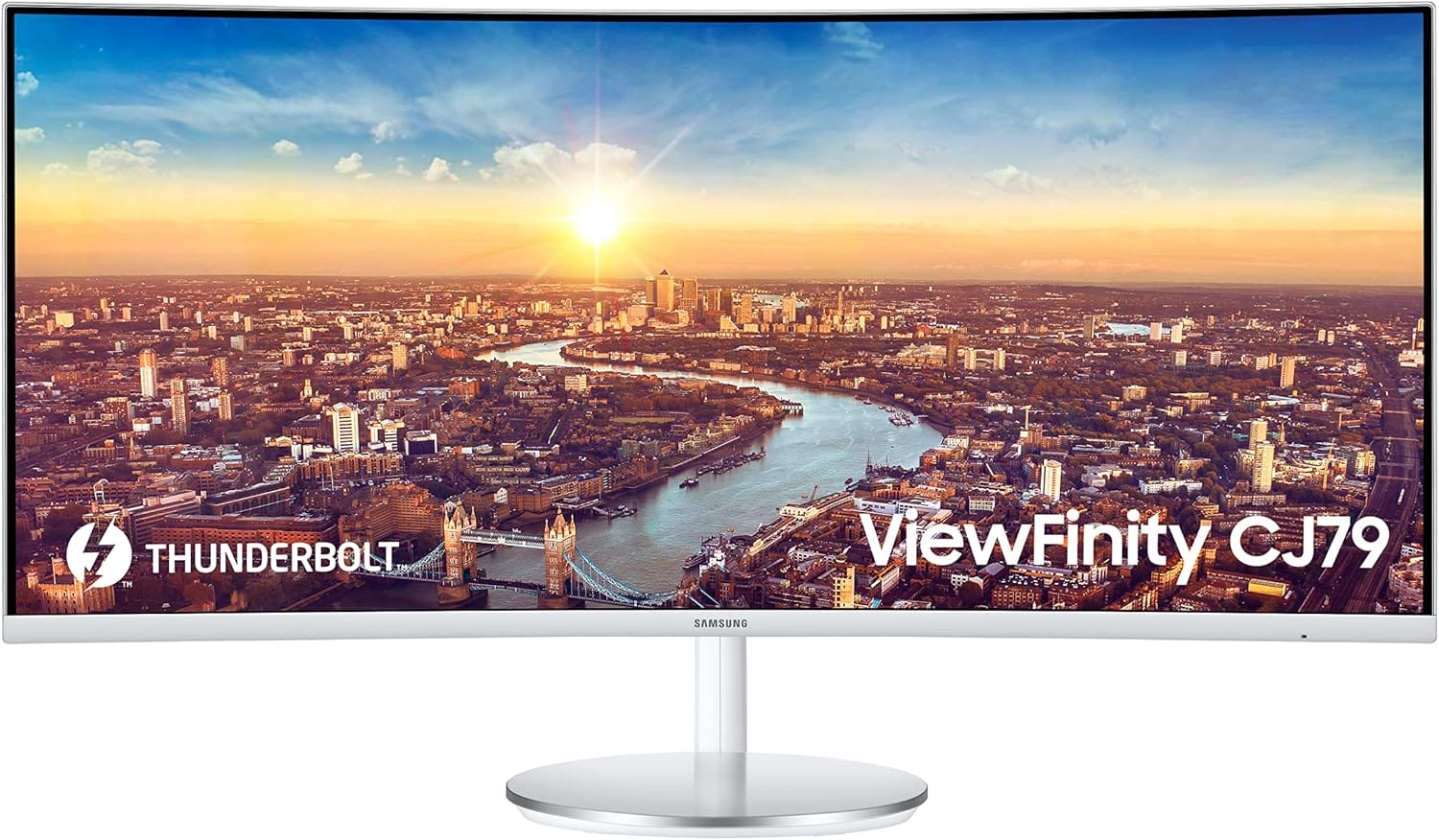
SAMSUNG LC34J791WTNXZA Monitor
34” ViewFinity CJ79 Series Ultrawide QHD (3440×1440) Computer Monitor, 100Hz, Thunderbolt 3 Daisy Chain, QLED, HDMI, USB Hub, Height Adjustable Stand, LC34J791WTNXZA, White
Why Ultrawide Monitors are Becoming Essential for Modern Music Production
The shift towards ultrawide monitors in music production isn’t just a fashion statement; it caters to an essential need for efficiency and multitask capability. Modern music production often involves juggling between various applications – from digital audio workstations to video editing software for content creation. An ultrawide monitor allows seamless integration of these tools side by side, reducing the clutter and disorientation that come with alt-tabbing through different applications.
Additionally, the expansive 21:9 aspect ratio or even wider configurations offer a broad canvas. Imagine arranging your tracks, plugins, and mixing consoles across an elongated horizontal space, your entire project laid bare without hiding any elements behind another window. The ultrawide format ensures that every crucial tool is a glance away, perfectly complementing the precise audio analysis that high-quality headphones provide. For the audio enthusiast who values both sonic detail and a streamlined workflow, an ultrawide monitor isn’t just a luxury; it’s becoming an indispensable part of the creative process.
Overall, best ultrawide monitors play a crucial role in enhancing the entire music production workflow, from the initial stages of composition to the final stages of mixing and mastering. Their ability to provide a vast visual soundscape complements the auditory aspect of music production, making them an indispensable tool for producers seeking to elevate the quality and efficiency of their work.
Features to Consider When Choosing an Ultrawide Monitor for Music Production
When venturing into the expansive realm of music production, selecting the right ultrawide monitor can significantly elevate your sonic craftsmanship. A myriad of characteristics come into play to ensure a harmonious blend of visual and audio precision. Awareness of these factors is pivotal in your quest for the ultimate monitor that resonates with your auditory endeavors.
Screen Real Estate
Firstly, screen real estate is paramount in music production. An ultrawide monitor, typically with a 21:9 aspect ratio, offers ample space to work with multiple tracks, plugins, and effects simultaneously. This expanse can reduce the need to alternate between windows, fostering a more efficient workflow. Secondly, resolution plays a vital role. A crisp, clear image is important when scrutinizing waveforms or editing minute details. A minimum of 2560×1080 is advisable, though higher resolutions like 3440×1440 provide even more clarity and detail.
Color accuracy and Panel technology
Another crucial factor is color accuracy and panel technology. Music producers might also venture into video production or content creation where color representation is important. IPS panels are renowned for their superior color accuracy and wide viewing angles compared to TN panels. Refresh rate, though predominantly a concern for gamers, can influence smoothness during scrolling and navigating timelines. A higher refresh rate can provide a more seamless experience, though 60Hz is typically more than adequate for music production tasks.
Connectivity Options
Connectivity options should not be underestimated. Music production often requires connecting various devices such as audio interfaces, MIDI controllers, and external drives. Thus, a monitor with multiple input/output options, including USB-C, HDMI, and DisplayPort, is highly desirable. Additionally, ergonomic features must be taken into account. An adjustable stand that allows for tilting, height adjustment, and swiveling can keep the workspace versatile and comfortable during long mixing sessions.
Monitor’s Performance with Onboard Speakers
Last but certainly not least, the monitor’s performance with onboard speakers is generally an afterthought for music producers, given their reliance on high-quality studio monitors or headphones for sound precision. Nevertheless, built-in speakers can be a convenient feature for casual listening or when reference studio monitors are unavailable.
Top 4 Ultrawide Monitors for Music Production
Immersing oneself in the world of music production requires not just keen ears but also a visual canvas that can keep pace with creativity. This is where ultrawide monitors enter the symphony. Harnessing the expansive prowess of an ultrawide display can transform a cluttered DAW (Digital Audio Workstation) into a clear orchestration of tracks and timelines.
1. LG 34WQ650-W Monitor
Among the top contenders is the LG 34WQ650-W. This 34-inch IPS display boasts a 2560×1080 resolution with HDR10 compatibility, providing a vibrant spectrum of colors. Its sRGB 99% color gamut ensures true-to-life hues, essential for video scoring or any task where color matters. The ergonomically designed stand allows for extensive adjustments, which is crucial for maintaining a healthy posture during long mixing sessions.
2. Dell S3422DWG Curved Gaming Monitor
Stepping up the resolution scale is the Dell UltraSharp S3422WG. A 34-inch curved monitor with a 3440×1440 WQHD resolution offers a more immersive experience, perfect for scrutinizing waveforms and audio plugins. This is best ultrawide monitor for gaming and music.
Aspect Ratio: 21:9. Viewing Angle is 178° (H) / 178° (V).Contrast Ratio : 3000:1 / 3000:1 (dynamic), Brightness : 400 cd/m²..Power Consumption Stand by : 0.3 Watt. Humidity Range Operating : 10 – 80% (non-condensing). The curvature of the monitor subtly envelopes your field of view, providing a focused and centralized workstation, while the onboard 9W speakers offer a decent audio output for quick sound checks.
3. LG 38WN95C-W Monitor
For those yearning for peak performance and aren’t shy about investing in their studio, the LG 38WN95C-W is a marvel of technology. This 38-inch monitor extends the workspace even further with a 3840×1600 WQHD+ resolution. Apart from its sheer size, it features a USB-C port that can transmit data, video, and power over a single cable – a boon for a workspace yearning for cable management sophistication.
4. Samsung CJ791 Monitor
The Samsung CJ791 is another gem, particularly for its Quantum Dot technology which provides an exceptionally wide range of accurate colors. This 34-inch monitor includes Thunderbolt 3 connectivity, facilitating high-speed data transfer which is a godsend when working with large audio files and projects. The monitor’s 1500R curved screen and Quantum Dot technology deliver a captivating visual experience, ideal for immersing music producers in their creative workflows. With its built-in speakers and streamlined design, the CJ791 offers a compelling all-in-one solution for music production setups.
Ultimately, the choice of a best ultrawide monitor for music production is a symbiosis between personal preference and practical functionality. Each ultrawide monitor carries its set of features that cater to different facets of music production, rendering a creative canvas that allows your aural landscape to flourish in visual form.
Tips for Setting Up and Optimizing Your Ultrawide Monitor for Music Production
Setting up a best ultrawide monitor for music production involves more than just plugging it in and adjusting the brightness. To fully harness the potential of an ultrawide monitor, consider the following tips for optimizing your visual workspace.
1. Calibration and Color Accuracy
Before delving into music production tasks, calibrate your ultrawide monitor to ensure color accuracy and consistency. Utilize calibration tools and software to achieve a display profile that accurately represents the colors of your audio visualizer and other production software.
2. Ergonomic Workspace Arrangement
Position your ultrawide monitor at an optimal distance and angle to promote a comfortable and ergonomic workspace. Consider investing in an adjustable monitor arm or stand to customize the viewing height and angle, reducing neck strain and enhancing visual immersion.
3. Utilize Ultrawide-Compatible Software
Explore music production software that fully supports ultrawide resolutions, taking advantage of the extended screen real estate. Tailored interfaces and optimized layouts can enhance workflow efficiency and provide a more intuitive production experience.
4. Ambient Lighting Considerations
Evaluate the lighting conditions in your workspace, as ambient lighting can significantly impact the visual performance of your ultrawide monitor. Minimize glare and reflections to maintain visual clarity, and consider incorporating bias lighting to reduce eye strain during extended music production sessions.
5. Multitasking and Workflow Organization
Harness the multitasking capabilities of your ultrawide monitor by strategically arranging production tools and reference materials. Utilize window management utilities to efficiently organize your visual workspace, streamlining your music production workflow.
Maximizing the potential of an ultrawide monitor for music production requires a combination of thoughtful setup and software optimization. By carefully calibrating your display, creating an ergonomic workspace, and leveraging ultrawide-compatible software, you can expand your visual soundscape and elevate your music production experience to new heights.
Conclusion: Enhancing Your Music Production with the Best Ultrawide Monitors
Music production has evolved into an immersive experience that demands a harmony of audio and visual elements. With the rise of sophisticated digital audio workstations (DAWs), producers require an enormous digital canvas to keep an eye on the countless tracks, plugins, and effects that bring a composition to life. This is where the ultrawide monitor comes into play, redefining the producer’s workspace with an expansive view that can facilitate creativity and workflow efficiency.
Embracing an ultrawide monitor for your studio setup is more than just a luxury; it’s an investment in the quality and ease of your music production process. The elongated aspect ratio stretches your DAW out before you, allowing you to visualize more tracks and parameters at a glance. This expanded visibility reduces the time spent scrolling through menus and adjusting windows, therefore granting you more time to focus on the fine-tuning of your mix.

